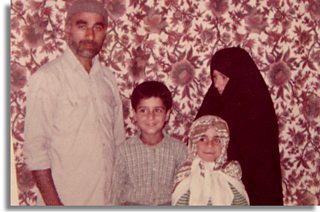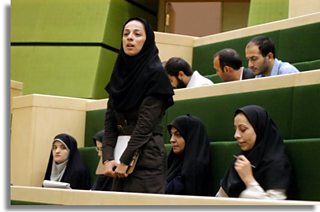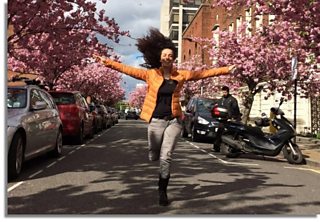How one photo changed my life
Masih Alinejad is a journalist and activist from a small village in Iran. In 2014 she sparked a social media movement when she shared a picture of her curly hair blowing in the wind. This is the story of that photo…
Growing up in Iran
I grew up in a traditional family in a rural area of Iran. From seven years old, I had to wear the hijab, inside and outside.

In my family, the women even slept with their headscarves on! I rarely saw my mother’s hair.
As a teenager, I wanted to rebel, so I stopped wearing the chador – a loose-fitting piece of cloth that envelops the body like a cape. This caused my father to spit in my face and disown me for months.
The politics of compulsory hijab
In Iran, if you don’t abide by the compulsory hijab rules, you can’t get an education or a job. You don’t have a life. You can face prison and worse.
Compulsory hijab, at its core, is a way of suppressing women’s rights, from equal pay, to custody rights to inheritance.
If a woman cannot choose how to cover her hair, how can she control what goes on inside her head?
Abandoning the hijab
After my marriage and the birth of my son, I moved to Tehran and had run-ins with the paramilitaries who oversee the behaviour of citizens. Once, while I waited for a taxi, they accused me of being a prostitute and kicked me in my shin.
These incidents enraged me and I was inspired to work in journalism, to find a way to question authority.

As a political journalist I spoke out against the Iranian president and the government, and I called for the conditions of women to improve. This caused me problems during the 2009 elections and I was eventually warned: leave Iran or face arrest.
Although I moved to the UK, the compulsory hijab was so embedded in my psyche that for more than two years I could not venture out in public without some form of a head covering. I made my peace with it by wearing a hat in public – and then one day in late 2011, I abandoned the hat as well.
The photo
I never expected cherry blossoms in London to change my life. But that goes to show how your life can be transformed by the most innocuous of gestures.
It was May 2014 and it was a beautiful spring day, full of warmth and colour and a light breeze to make you appreciate life. I could barely contain myself, running down side streets, jumping and whooping with joy like a child, while my partner, Kambiz, took pictures.
Later that same day, I posted one of the photos on my Facebook page, musing about the sensation of feeling the wind in my hair. I couldn’t believe how quickly people responded.

The picture received many thousands of likes, was shared hundreds of times and started an online conversation about freedom to choose how to dress in Iran. The biggest surprise was the number of women who started posting pictures of themselves without their hijab in the comments section.
#MyStealthyFreedom
I posted a photograph of myself driving in Iran without my headscarf and I asked women to send me photographs of their stealthy moments. I was inundated with photographs and videos.
That was four years ago and the campaign is still going strong. The women who sent their pictures and videos knew that they were engaged in a public act of civil disobedience. The name of our campaign, #MyStealthyFreedom, was a mockery of how we were forced to live under the Islamic Republic.
It's amazing how many people have got involved. At the beginning it was just young women, but now they are older, like the 80-year-old grandmother who waved her headscarf on a stick for the camera!
Men are also joining and helping to shame those who treat women badly. This campaign makes everyone a leader. The Iranian president and supreme leader don’t get as many likes as our campaign does.
Iranian women and their rebellion
And something unexpected is happening – Iranian women are speaking out against compulsory hijab, not just on social media but in the streets of Iran, challenging the clerics and the morality police.
The fight against compulsory hijab has become one of the biggest headaches for the Islamic Republic. Women are the real agents of change in Iran and they will transform the country.

-
![]()
The Wind in My Hair
Listen to Masih Alinejad’s memoir, The Wind in My Hair.

More from Radio 4
-
![]()
Audio Books
Exceptional readings available online.
-
![]()
An assortment of our most intriguing idioms, their possible origins and how to use them.
-
![]()
Although ancient in some cases, these proverbs still provide valuable guidance.
-
![]()
How do fonts change the meaning of a message?





